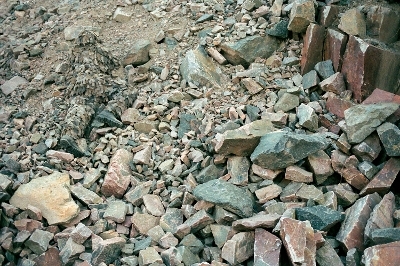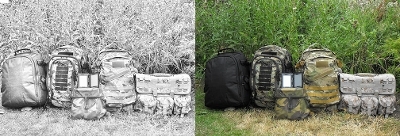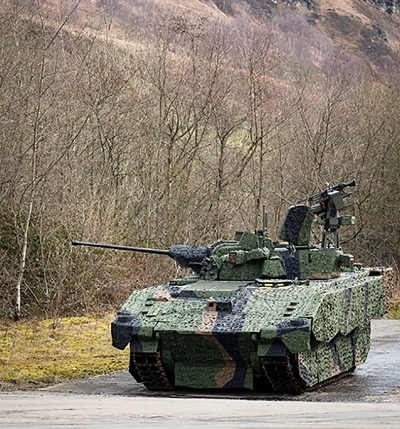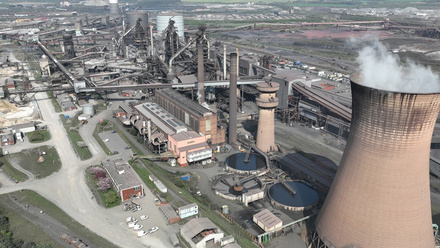Hiding in plain sight
Defence experts Steven J Savage, Martin Swan FIMMM and Eoin O’Keefe FIMMM uncover the secrets of modern camouflage.

The purpose of camouflage is easy to understand – if you can’t be seen, then you can’t be shot at, or at a minimum, your chances of survival are improved. This principle is well established in the natural world, and there are many examples of camouflage in mammals (zebras), marine life (squid, fish), insects (beetles, caterpillars, butterflies) and birds (owls).
In fact, almost any living creature that has a natural enemy will have developed some form of camouflage to survive. Natural camouflage has evolved over many generations and, in some cases, many thousands of years. Humans also use camouflage but compared to nature we are amateurs, having only used it for the past 100 years or so. Today, camouflage is an essential survivability tool.
Disguise and deceive
Modern camouflage is designed not only to disguise and therefore reduce the chance of detection, it is also intended to deceive and confuse an enemy so that one’s identity and intentions are unclear. Identification is especially important to distinguish friend from foe, as well as to distinguish foe from non-combatant.
It is important to understand, therefore, that camouflage is not about invisibility. It is the use of materials and methods to reduce the contrast between a person or object and the background. This is more difficult than it sounds and involves colour, shading, shape and patterns that are mostly static but sometimes dynamic, or adaptive to different backgrounds.
Nature uses all these aspects including timing and hunting strategies or, as a modern soldier would say, ‘tactical movement’. This is why there are so many studies of nature’s camouflage solutions, as scientists seek inspiration and understanding of why they are so effective.
There is, however, an important caveat – nature’s camouflage is limited to one environment. For example, a zebra, well disguised in its natural habitat on the grasslands of Africa would be easily seen in a Swedish forest while the stonefish would be easily seen on a smooth, sandy sea bottom. In contrast, a soldier today may operate in environments ranging from the monochromic angular black and white of the arctic to the mainly vertical green and brown of a forest or the smooth beige of a sandy desert. Today, with the advent of urban warfare, the situation becomes very complex, and the demands more difficult to meet.
An eye for detection
The original sensor is the eye. For animals and humans the eye is convenient, practical and always available so it has many advantages. It can be reinforced by simple optical devices such as telescopes and binoculars, or more complex technology such as image intensifiers. However, it has a major drawback in that it is only effective in daylight, and – at least in humans – much less effective in low-light levels such as at dawn and dusk, or in fog and smoke.
The human eye is sensitive to colour wavelengths from about 350nm (blue) to 750nm (red), although this depends on the wavelength size. Some birds and insects can see outside these limits. The receptors in the eye are most sensitive to the longer wavelengths at the red end of the spectrum, which is why warning signs are always red. However, the electromagnetic spectrum extends well beyond the wavelengths visible to the human eye – from the ultraviolet to the infrared. Various man-made sensors are designed to detect non-visible wavelengths for an array of non-military purposes, including chemical analysis to detecting the ripeness of apples. Recent advances in semiconductor technology and miniaturisation has enabled significant developments in sensor technology, leading to better, smaller and cheaper imaging sensors that are now widely available. Many of these devices see in wavelengths invisible to humans so camouflage also needs to function in non-visible wavelengths.

Blending into the background
Camouflage is most obviously used for the textiles in uniforms, but it is also important for mobile platforms such as ships, aircraft, vehicles and for fixed or temporarily immobile objects.
Despite decades of study into camouflage pattern development, there is still no consensus on the best pattern. There are as many different camouflage patterns as there are nations using camouflage, and probably more so, as each nation may use a number of different patterns and colour combinations for different scenarios.
However, there are general guidelines that relate to how camouflage is used. The distance between the observer and the target is important as small details are not visible at long range, and large details at short range are obvious. For camouflage patterns used on uniforms, typical ranges can straddle from tens to hundreds of metres. For vehicles, meanwhile, the ranges may be up to several kilometres, and for ships and aircraft even greater. It is important therefore that the pattern and colour combination is effective over different ranges, achieved by repeating patterns at different length scales.
Natural features such as trees, rocks and vegetation have irregular contours, whereas manufactured objects such as vehicles and ships have regular contours consisting of straight lines. Camouflaged patterns are designed to disrupt regular contour, making the object more difficult to identify. The type of pattern also depends on the anticipated background. For example, forests consist of vertical trees, so a vertical camouflage structure is advantageous. But pine forests are often bare at ground level, whereas deciduous forests may have less prominent trunks and more foliage.
Colour is important, and again dependent on the anticipated background. As mentioned, this is difficult to predict, so compromises must be made. The latest technology aims for adaptive camouflage and allows for colour change in near real-time. Colour may also vary depending on the season and weather. Modern camouflage therefore is vastly different from the single colours of green, brown or white, initially used in military operations.
A move to artificial intelligence?
Natural selection has allowed nature to evolve and develop the most optimal camouflage for a particular environment. For modern armies, this is obviously not a solution, so how is the effectiveness of today’s combat camouflage measured?
The traditional method is to take several soldiers dressed in different camouflage uniforms and combine them with many observers. Initially, the range between soldier and observer is too large for detection. The distance is gradually reduced until the soldiers become ‘visible’. The worst camouflage will become visible first. In this way, its effectiveness can be measured in a qualitative, relative way, however, it is not an absolute measurement.
There are drawbacks to this method. Many observers are required to obtain a reasonable statistical reliability and large numbers are needed to account for their variability in detection ability. Many people, especially men, are partially colour-blind, and there are those with less than 20:20 vision in either or both eyes. Tiredness, fatigue, training and experience are also important factors. Lighting is important and particularly the angle. As is the background environment, meaning measurements must be repeated in different environments and in varying weather conditions as colours appear differently when wet.
Finally, the only sensor being used is the human eye, whereas in reality sensors that are sensitive to different wavelengths are used, so the measurements must also be repeated with these devices. The number of experimental variables becomes overwhelming.
Attempts are being made to make camouflage assessment quantitative. This requires an understanding of not only how the human eye works, but also how the information collected is analysed by the brain through the process of cognition. Then, this needs to be applied to the various sensor technologies, with their very different wavelength sensitivities.
Camouflage evaluation and assessment is far from easy, and there is growing interest to use artificial intelligence to both evaluate camouflage and to optimise patterns.
Suited up and on the move
Materials used for camouflage today are a far cry from the wool and cotton fabrics used in the early days when uniforms were principally designed to keep a soldier warm and dry. While this is important, many additional functions are needed, including heat and flame resistance, abrasion resistance, permeability, wicking, non-absorbency, oil, water and insect-repellent coatings – which must be washable – and design features for comfort, function and non-snagging. The modern uniform is a complex system of natural fibres, where wool and cotton still have many advantages alongside synthetic fibres including polyaramide (Nomex, Kevlar), ultra-high molecular weight polyethylene (Dyneema) and others.
Camouflage patterns are printed using digital inkjet type printers, allowing rapid changes of pattern if needed, on roll-to-roll machines. The pigment and ink compositions used are closely guarded secrets, as they are critical for the spectral properties of the finished camouflage.
Soldiers are not normally supplied with tailor-made uniforms, but advances in digital manufacturing to scan a body, cut and stitch fabric are rapidly reducing the cost of tailored clothes, so the days of ill-fitting uniforms may soon be over.
The same principles can be used to fit vehicles with suits of camouflage, rather than simply throwing a net over the asset, which makes movement impossible. Instead, camouflage can now be designed and fitted to allow rapid movement, known as mobile camouflage.
It is important that the camouflage is easy to install on a vehicle and requires the minimum amount of effort. While stitching may seem a relatively simple matter of joining, it is essential it is done correctly as a badly joined seam in the wrong place can be as revealing as using the wrong colour.
The race is on
As soon as anyone introduces a new and better camouflage material, this incentivises everyone else, because no-one wants to be the one most visible in combat.
Camouflage scientists are being influenced by materials developed for civil applications, particularly those used for saving energy. Most materials radiate heat at the same rate, which is dependent on their temperature, because they have the same emissivity. However, some materials have a lower emissivity, which reduces the rate of heat loss, for example the silver coatings originally used in Thermos flasks. New and non-shiny materials with low emissivity are being tested as paints on buildings to conserve energy, which could be applied to camouflage materials to reduce the contrast of a warm object, such as a vehicle, against a cool background, viewed using infrared sensors.

Modern warfare is highly dynamic and soldiers and vehicles must be able to move rapidly. This means the background will also change quickly, so camouflage optimised for one background will be futile, or worse, actually revealing in another. Inspired by the chameleon, scientists are developing adaptive camouflage, which can change colour and pattern in (almost) real-time. Used in smart windows, electrochromic materials change colour with the intensity of sunlight, or at the flick of a switch, and could be applied to textiles, or in the form of camouflage paint. Preliminary results are promising, but the demands of a coating on a window are quite different from a paint used on a tank.
It is also important that camouflage remains effective under different weather conditions. Vehicles become dirty and wet vehicles become shiny, negating the effect of any camouflage. Superhydrophobic materials that reject dirt and water may solve both these problems. These materials are particularly attractive to car manufacturers but have not been sufficiently robust for practical use. New superhydrophobic materials with improved wear properties are, however, becoming available.
Military vehicles have a long service life. Even though modern camouflage is not inexpensive, it is still much cheaper than buying new vehicles, so retrofitting modern camouflage on older but still serviceable vehicles is economically advantageous.
But ultimately, while prolonging the life of tanks and other military assets is an advantage, camouflage in modern warfare exists to help soldiers avoid detection. As techniques develop and new materials are used, protecting life is paramount.
Suit of armour
In the early days of warfare, camouflage was not necessary. When weapons were short-range clubs, swords and pikes, you were necessarily close to your enemy. Even when longer-range bows and arrows, pistols and muzzle-loading rifles were developed, camouflage was unnecessary because the weapon was inaccurate and the chances of being hit were quite low. Indeed, it was considered more important to – in modern parlance – project power and strength by being highly visible. Hence, the resplendent, if impractical, uniforms worn by the Redcoats at the battle of Culloden in the mid-18th century. The uniform was also important to identify and distinguish friend from foe in the heat of the battle.
When weapons became more powerful, more accurate and with longer range, the usefulness of ‘hiding in plain sight’ became apparent. Primitive camouflage was employed during the First World War. Equipment such as helmets were painted with random, earth-shade patterns, in what would today be called ‘disruptive’ camouflage, intended to disguise the shape of an unnatural object. In the marine domain, this led to the well-known ‘dazzle’ camouflage to disguise both the shape and heading of ships from enemy submarines.
During World War II, camouflage progressed to both an art and a science. Indeed, artists were invaluable in contributing their knowledge of colour perception and pattern to materials and technologies to reduce visibility, and the success of some major battles has been attributed to the effective use of camouflage.
Did you know?
The eastern screech owl uses its feathers and plumage to blend into trees and other nooks, while flammulated owls have tufts that look like ears, but are actually feathers that stand up to resemble small twigs or branches.
Advances in Camouflage Science and Engineering
A virtual IOM3 event, Advances in Camouflage Science and Engineering, will be held over two consecutive afternoons in March 2021. The scope follows three main themes – materials science and technology in camouflage, camouflage engineering and systems, and holistic camouflage including deception. The deadline for papers to be submitted is mid-December. For any additional information, contact Melanie Boyce at [email protected].







